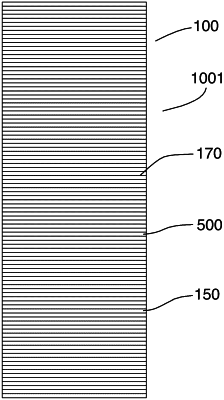| CPC A63B 21/4037 (2015.10) [B29C 59/022 (2013.01); B32B 27/40 (2013.01); B32B 2262/0276 (2013.01); B32B 2274/00 (2013.01); B32B 2307/732 (2013.01); B32B 2471/04 (2013.01)] | 8 Claims |

|
1. A method for making an exercise mat having a three-dimensional surface texture, comprising:
preparing a first layer of the exercise mat by pouring liquid polyurethane onto an elastic fabric and curing the polyurethane;
attaching a second layer that comprises a thermoplastic elastomer to a fabric side of the first layer, the fabric side being a lower surface of the first layer;
cutting a mat made from the first and second layers to a desired size and shape;
positioning the mat on a mold plate having an embossed top surface with a polyurethane side of the first layer facing the embossed top surface, the polyurethane side being an upper surface of the first layer, the embossed top surface being embossed with the three-dimensional surface texture;
inserting the mold plate into a vacuum embossing machine and heating the mat for 1 to 15 minutes at a temperature of 120 to 200 degrees Celsius; and,
cooling the mat for 5 minutes;
wherein the temperature and suction provided by the vacuum embossing machine softens the thermoplastic elastomer of the second layer conforming it to the three-dimensional surface texture of the embossed top surface of the mold plate; and,
wherein the first layer conforms to the three-dimensional surface texture of the second layer to thereby provide the three-dimensional surface texture on the upper surface of the first layer.
|